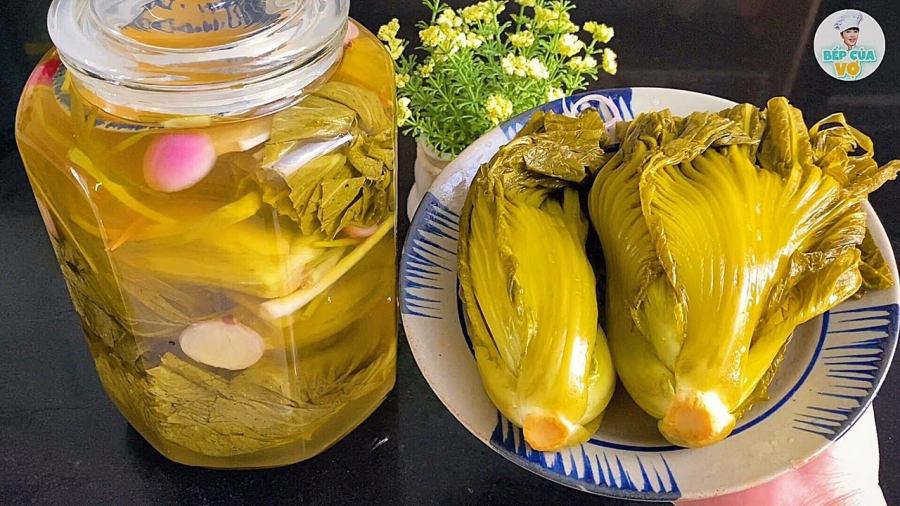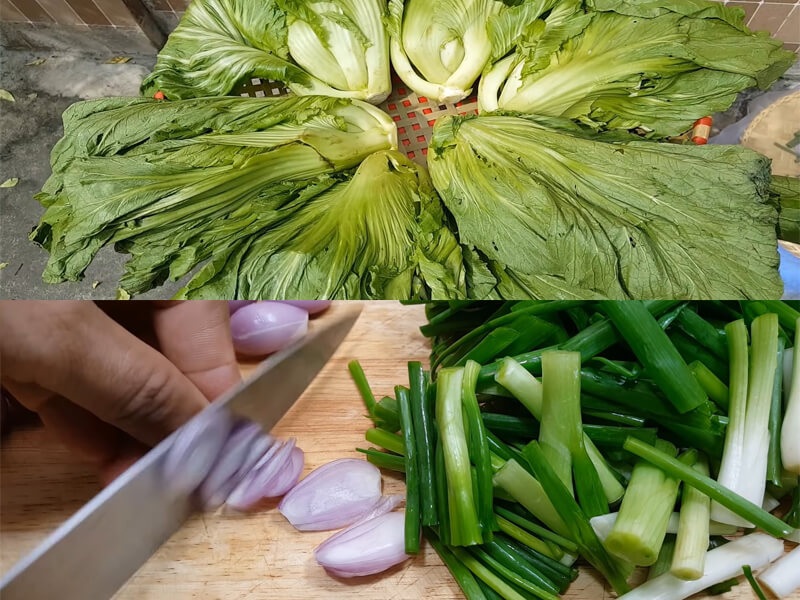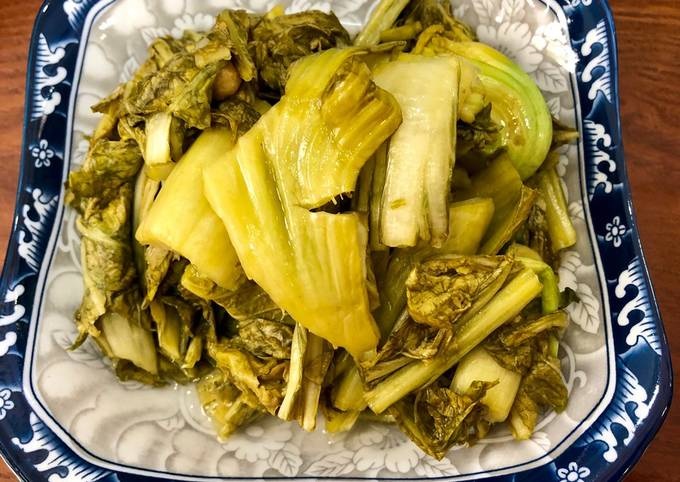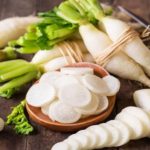How to Make Delicious Pickled Chinese Cabbage
The most common ingredient for pickling cabbage is Chinese cabbage. It is best to choose older cabbage plants, separate each leaf, and remove any wilted leaves. Rinse the cabbage thoroughly and let it dry in the sun for a day to make the pickled cabbage tastier and prevent spoilage.

Rinse the cabbage again to remove any dirt, then cut it into bite-sized pieces. You can also keep the cabbage whole for pickling.
Prepare the pickling solution: Boil water and let it cool to a warm temperature (1 liter of water for every 1 kg of cabbage), dissolve 60g of salt and 20g of white sugar in the water. It is important to boil the water to kill bacteria and prevent the pickled cabbage from becoming slimy or sticky.
Clean the pickling jar (preferably glass) and rinse it with boiling water to sterilize it.
Place the cabbage in the jar with the stem portion at the bottom and the leaves on top to ensure even pickling. Pour in the pickling solution. For a more flavorful pickled cabbage, you can add some peeled shallots and a few chili peppers. You can also add a few spoons of vinegar to make the cabbage pickled faster and tastier.
Use a plate or weight to keep the cabbage submerged in the brine. After 2-3 days, the pickled cabbage is ready (the pickling time may vary depending on the room temperature and your preference for the level of pickling). Store the pickled cabbage in a cool place, away from direct sunlight.

How to Make Delicious Pickled Chinese Kale
Chinese kale pickles quickly, so you should only pickle a sufficient amount for one meal. Any leftover pickled kale should be tightly sealed and stored in the refrigerator for up to 1-2 days.
Ingredients: 1 Chinese kale (about 2 kg), 1 carrot, a small bunch of watercress, a bunch of Vietnamese coriander, 1 liter of boiled water (warm), 20g of sugar, 60g of salt, 2 teaspoons of vinegar.
Separate the kale leaves, rinse them clean, and cut them into thin strips. Peel the carrot and cut it into thin strips. Trim the watercress, remove the roots, rinse it clean, and cut it into 5cm long pieces. Rinse the Vietnamese coriander, cut it into small pieces. Mix all the vegetables together.
Dissolve salt, sugar, and vinegar in the warm water.
Place the mixed vegetables in a clean jar that has been rinsed and sterilized with boiling water. Pour the pickling solution over the vegetables and use a weight or plate to press them down. After about 1 day, the pickled kale is ready to eat. It goes well with braised meats and grilled dishes, helping to enhance the flavor and prevent greasiness.
How to Make Delicious Pickled Root Vegetables
Ingredients: 1 kg of root vegetables, 1 liter of boiled water (warm), 20g of sugar, 60g of salt, a bunch of green onions, 2 teaspoons of vinegar.
Remove any wilted leaves from the root vegetables, rinse them clean, and thinly slice the leaves and stems. Peel the outer layers and roots of the vegetable, then slice them thinly. Dry the vegetables in the sun for a day, rinse them again, and let them dry.

Dissolve salt, sugar, and vinegar in water and mix well.
Mix the sliced root vegetables with the leafy parts, and place them in a clean glass jar that has been rinsed and sterilized with boiling water. Pour the pickling solution over the vegetables, submerging them completely. Use a weight or plate to keep the vegetables submerged. After 2-3 days, the pickled vegetables are ready to eat. They will be crunchy and have a delightful aroma.
Serving suggestion: Pickled vegetables have a tangy taste and are high in sodium. Therefore, keep the following points in mind:
– Do not eat pickled vegetables on an empty stomach. Eat a meal before consuming pickled vegetables, then wait for 10-15 minutes before eating the pickled vegetables.
– Do not eat the pickled vegetables if they are still green, taste bitter, have mold or an off smell.
– Do not consume pickled vegetables if the pickling liquid is sticky and the drained liquid is colorless or cloudy white like rice water. This indicates that the pickled vegetables have been rinsed and soaked in fresh water again, causing spoilage.
– Adults should consume a maximum of 50g of pickled vegetables per meal. Do not consume pickled vegetables continuously for several days. Consume pickled vegetables 2-3 times per week.
– Young children who can eat rice should not consume pickled vegetables. Children over 10 years old can consume 20g of pickled vegetables per meal. Pickled vegetables should be consumed once per week.
– Pickled vegetables should be cooked or consumed with other types of food.
– Do not consume pickled vegetables if you are pregnant or have digestive, liver, kidney, or cardiovascular diseases.































